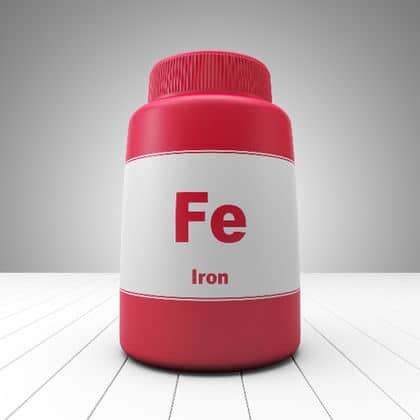President Franklin D. Roosevelt said, "The only thing we have to fear is fear itself." Certainly, when something is feared, it is easy to become irrational about it.
Currently, a fear of iron stems from a theory proposed in 1981 by Dr. Jerome Sullivan that iron accumulation in the body increases the risk for coronary heart disease. A quarter of a century later, Sullivan's theory remains unproved, and several studies have refuted the theory.
Question: Should we fear iron?
Answer: Approximately one out of every 200 people carries a gene that can make them more susceptible to a condition called hemochromatosis, or iron overload disease. Too much iron for someone with this condition can lead to a variety of serious health problems.
In contrast to the fairly low prevalence of hemochromatosis, iron deficiency is one of the most common and serious nutrition problems in the world. Even in the U.S., the prevalence of iron deficiency anemia is reported to be as high as 29 percent among low-income women of childbearing age.
Q: How does iron deficiency affect people?
A: Iron deficiency can cause a type of anemia that reduces the capacity of blood to deliver oxygen to cells throughout the body. This results in fatigue among other possible symptoms.
Not fully appreciated is the fact that iron deficiency, even without anemia, can have serious consequences. Potential effects include sleeping problems; depression; inability to think clearly; memory and learning problems; restless legs syndrome; ridged, flattened or "spooned" fingernails; hair thinning and loss; dizziness or vertigo; abnormal heart function; decreased immune function; inability to tolerate drugs normally; reduced ability to produce thyroid hormone; etc.
Bruce Ames, a highly respected researcher from the University of California-Berkeley, has recently expressed concerns that chronically low iron status could cause many health problems throughout the body. He is particularly concerned about impaired brain function and accelerated aging processes resulting from low iron status. Interestingly, iron deficiency can cause oxidative damage to cells, and so can iron excess.
Iron deficiency is especially common in adolescent and pre-menopausal women. Due to monthly blood losses, these women have iron needs about twice those of men their age. Men also can develop iron deficiency, especially athletes with a diet short on good iron sources.
Our next column will explain daily iron needs and how to get enough from food. So, if you are not hopping like the Energizer Easter bunny, be sure to read our next article two weeks from today.
Alan Titchenal, Ph.D., C.N.S. and Joannie Dobbs, Ph.D., C.N.S.
are nutritionists in the Department of Human Nutrition, Food and Animal Sciences,
College of Tropical Agriculture and Human Resources, UH-Manoa.
Dr. Dobbs also works with the University Health Service
are nutritionists in the Department of Human Nutrition, Food and Animal Sciences,
College of Tropical Agriculture and Human Resources, UH-Manoa.
Dr. Dobbs also works with the University Health Service
© 2008 Honolulu Star-Bulletin -- http://starbulletin.com
http://www.nutritionatc.hawaii.edu/HO/2008/389.htm
http://www.nutritionatc.hawaii.edu/HO/2008/389.htm


No comments:
Post a Comment